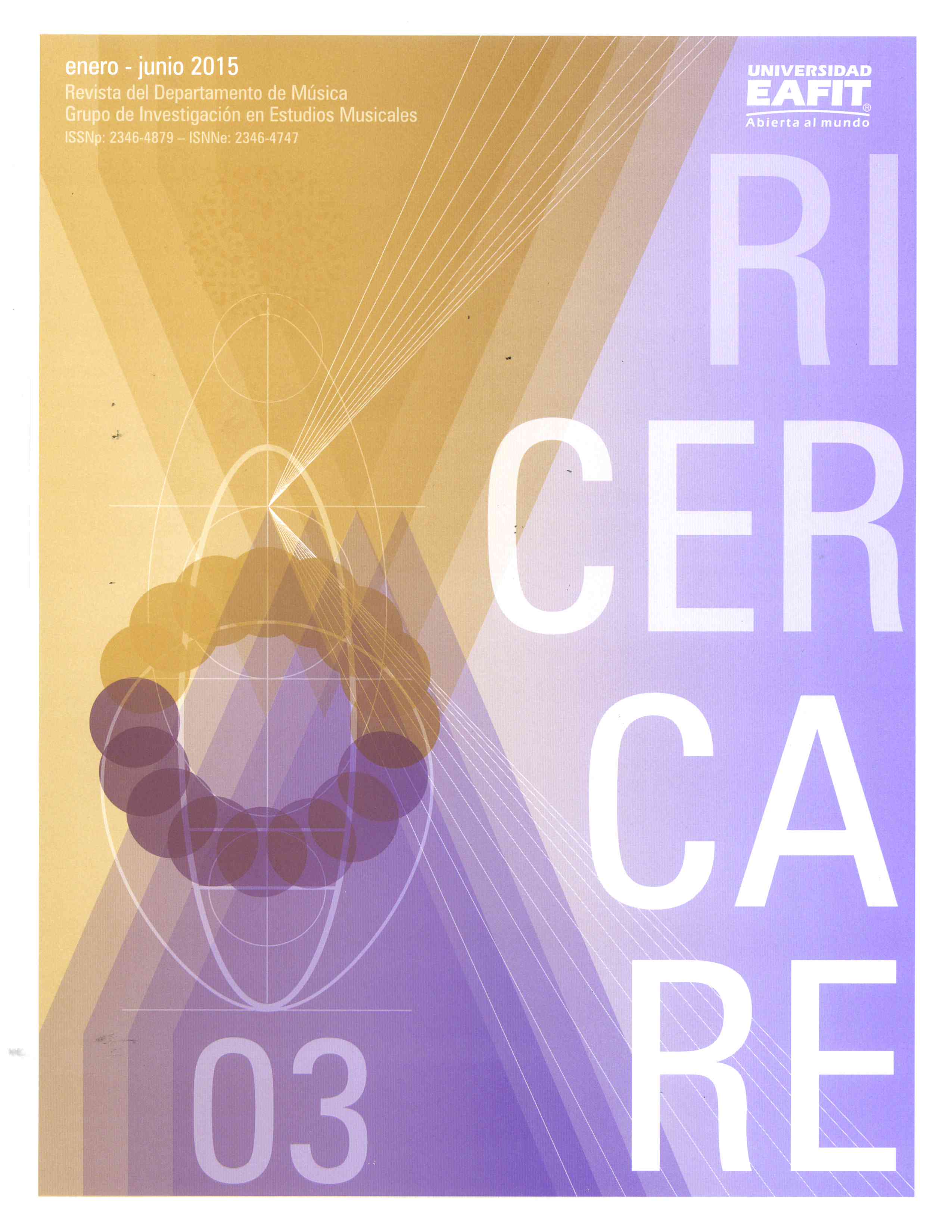La música renacentista como una etapa de la evolución continua del tonalismo
Main Article Content
Keywords
Tonalism, functionality, modalism, musical themes, Rhythm and metrics, varietas, and Harmony in relation to Counterpoint
Abstract
The purpose of this project was to establish if the Renaissance music (15th and 16th centuries), usually considered as modal, is substantially different from the tonal music of the upcoming periods or if it can be seen as one sole system steadily evolving between the 15th and 16th centuries. For this purpose, we analyzed a representative selection of works from those two centuries emphasizing on harmonic functionality as an expression of sintactic differentiation under specific analytical criteria, and both qualitative and quantitative methods. Instead of discarding or attacking the present authorized theories, we tried to bring both them and our findings together, in a more synthetic and generalizing theoretical view. We will go on with our critical review of the musical lexicon because we have considered it non rigorous ever since our first musical projects and, this time, we will reconsider concepts like Tonalism, functionality, modalism, musical themes, Rhythm and metrics, varietas, and Harmony in relation to Counterpoint.
Downloads
Download data is not yet available.
References
Berry, W. (1987). Structural functions in Music. Nueva York: Dover.
De La Motte, D. (1981), Kontrapunkt. München, Kassel y Basel: Deutsche Taschenbuch Verlag/Bären-reiter.
Fubini, E. (2005). La estética musical desde la anti-güedad hasta el siglo XX. Madrid: Alianza Música.
Gauldin, R. (1985). Sixteenth century counterpoint. Long Grove, IL: Waveland Press.
Jeppesen, K. (1992). Counterpoint. Polyphonic vo-cal style of the sixteenth century. Nueva York: Dover.
Krumhansl, C. L. (1990). Cognitive foundations of musical pitch. New York: Oxford University Press.
Krumhansl, C. L., & Kessler, E. J. (1982). Tracing the dynamic changes in perceived tonal organization in a spatial representation of musical keys. Psychological Review, 89(4), 334-368.
Kühn, C. (1993). Tratado de la forma musical. Bar-celona: Labor.
Owen, H. (1991). Modal and tonal counterpoint: from Josquim to Stravisnky. Nueva York: Schirmer Books.
Piston, W. (1933). Principles of harmonic analysis. Boston, MA: Schirmer.
Riemann, H. (1962). History of music theory, books I and II (traducción de R. H. Hagg). Lincoln, NE: Uni-versity of Nebraska Press.
Yepes Londoño, G. A. (2014). Tratado del lenguaje tonal. Bogotá: autoreseditores.com
De La Motte, D. (1981), Kontrapunkt. München, Kassel y Basel: Deutsche Taschenbuch Verlag/Bären-reiter.
Fubini, E. (2005). La estética musical desde la anti-güedad hasta el siglo XX. Madrid: Alianza Música.
Gauldin, R. (1985). Sixteenth century counterpoint. Long Grove, IL: Waveland Press.
Jeppesen, K. (1992). Counterpoint. Polyphonic vo-cal style of the sixteenth century. Nueva York: Dover.
Krumhansl, C. L. (1990). Cognitive foundations of musical pitch. New York: Oxford University Press.
Krumhansl, C. L., & Kessler, E. J. (1982). Tracing the dynamic changes in perceived tonal organization in a spatial representation of musical keys. Psychological Review, 89(4), 334-368.
Kühn, C. (1993). Tratado de la forma musical. Bar-celona: Labor.
Owen, H. (1991). Modal and tonal counterpoint: from Josquim to Stravisnky. Nueva York: Schirmer Books.
Piston, W. (1933). Principles of harmonic analysis. Boston, MA: Schirmer.
Riemann, H. (1962). History of music theory, books I and II (traducción de R. H. Hagg). Lincoln, NE: Uni-versity of Nebraska Press.
Yepes Londoño, G. A. (2014). Tratado del lenguaje tonal. Bogotá: autoreseditores.com

